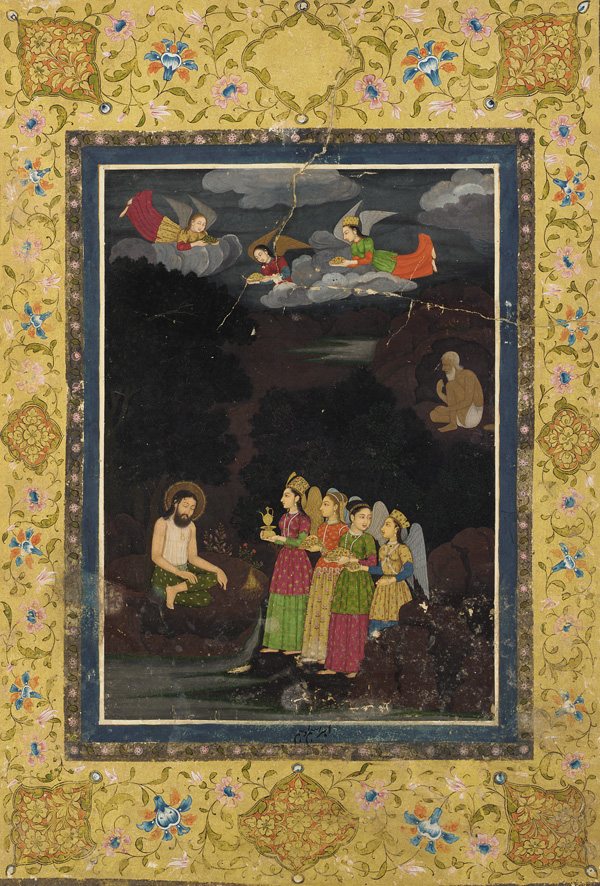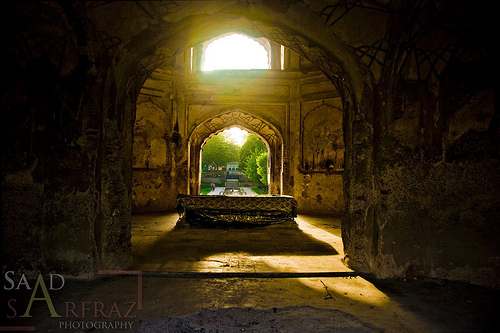
|
|
|
|
BY: SUN STAFF

Sufis Mystics and Attendants Aug 31, 2010 — CANADA (SUN) — A serial presentation of the Mughal effect on Vaisnava society. Today we continue on with the narrative provided by authors Shourie, Narain, Dubashi, Swarup and Ram Goel in their book, Hindu Temples: What Happened to Them. Here they describe the Sufi influence that traveled into India with the Muslims, which we touched upon a quite a number of the early articles in this series. In fact, starting with Babur, each of the Mughal emperors were themselves influenced to varying degrees by Sufi spiritual leaders, and that influence had a direct impact on how they conducted their particular portion of the Islamic invasion of India.
"6. The role of sufis: The saints of Islam who became martyrs or settled down were of several types which can be noted by a survey of their ziarats and mazars that we find in abundance in all lands conquered by the armies of Islam. But in the second half of the twelfth century A.D., we find a new type of Muslim saint appearing on the scene and dominating it in subsequent centuries. That was the sufi joined to a silsila. This is not the place to discuss the character of some outstanding sufis like Mansur al-Hallaj, Bayazid Bistami, Rumi and Attar. Suffice it to say that some of their ancestral spiritual heritage had survived in their consciousness even though their Islamic environment had tended to poison it a good deal. The common name which is used for these early sufis as well as for the teeming breed belonging to the latter-day silsilas, has caused no end of confusion. So far as India is concerned, it is difficult to find a sufi whose consciousness harboured even a trace of any spirituality. By and large, the sufis that functioned in this country were the most fanatic and fundamentalist activists of Islamic imperialism, the same as the latter-day Christian missionaries in the context of Spanish and Portuguese imperialism. Small wonder that we find them flocking everywhere ahead or with or in the wake of Islamic armies. Sufis of the Chishtiyya silsila in particular excelled in going ahead of these armies and acting as eyes and ears of the Islamic establishment. The Hindus in places where these sufis settled, particularly in the South, failed to understand the true character of these saints till it was too late. The invasions of South India by the armies of Alau'd-Din Khalji and Muhammad bin Tughlaq can be placed in their proper perspective only when we survey the sufi network in the South. Many sufis were sent in all directions by Nizamu'd-Din Awliya, the Chistiyya luminary of Delhi; all of them actively participated in jihads against the local population. Nizamu'd-Din's leading disciple, Nasiru'd-Din Chirag-i-Dihli, exhorted the sufis to serve the Islamic state. "The essence of sufism," he versified, "is not an external garment. Gird up your loins to serve the Sultan and be a sufi." [ ] An estimate of what the sufis did wherever and whenever they could, can be formed from the account of a pilgrimage which a pious Muslim Nawwab undertook in 1823 to the holy places of Islam in the Chingleput, South Acort, Thanjavur, Tiruchirapalli and North Arcot districts of Tamil Nadu. This region had experienced renewed Islamic invasion after the breakdown of the Vijayanagar Empire in 1565 A.D. Many sufis had flocked in for destroying Hindu temples and converting the Hindu population, particularly the Qadiriyyas who had been fanning out all over South India after establishing their stronghold at Bidar in the fifteenth century. They did not achieve any notable success in terms of conversions, but the havoc they wrought with Hindu temples can be inferred from a large number of ruins, loose sculptures scattered all over the area, inscriptions mentioning many temples which cannot be traced, and the proliferation of mosques, dargahs, mazars and maqbaras. The pilgrim visited many places and could not go to some he wanted to cover. All these places were small except Tiruchirapalli, Arcot and Vellore. His court scribe, who kept an account of the pilgrimage, mentions many masjids and mazars visited by his patron. Many masjids and mazars could not be visited because they were in deserted places covered by forest. There were several graveyards, housing many tombs; one of them was so big that "thousands, even a hundred thousand" graves could be there. Other notable places were takiyas of faqirs, sarais, dargahs, and several houses of holy relics in one of which "a hair of the Holy Prophet is enshrined." The account does not mention the Hindu population except as "harsh kafirs and marauders." But stray references reveal that the Muslim population in all these places was sparse. For instance, Kanchipuram had only 50 Muslim houses but 9 masjids and 1 mazar. The court scribe pays fulsome homage to the sufis who "planted firmly the Faith of Islam" in this region. The pride of place goes to Hazrat Natthar WalI who took over by force the main temple at Tiruchirapalli and converted it into his khanqah. Referring to the destruction of the Sivalinga in the temple, he observes: "The monster was slain and sent to the house of perdition. His image namely but-ling worshipped by the unbelievers was cut and the head separated from the body. A portion of the body went into the ground. Over that spot is the tomb of WalI shedding rediance till this day." Another sufi, Qayim Shah, who came to the same place at a later stage, "was the cause of the destruction of twelve temples." At Vellore, Hazrat Nur Muhammad Qadiri, "the most unique man regarded as the invaluable person of his age," was the "cause of the ruin of temples" which "he laid waste." He chose to be buried "in the vicinity of the temple" which he had replaced with his khanqah. It is, therefore, not an accident that the masjids and khanqahs built by or for the sufis who reached a place in the first phase of Islamic invasion occupy the sites of Hindu temples and, quite often, contain temple materials in their structures. Lahore, Multan, Uch, Ajmer, Delhi, Badaun, Kanauj, Kalpi, Biharsharif, Maner, Lakhnauti, Patan, Patna, Burhanpur, Daulatabad, Gulbarga, Bidar, Bijapur, Golconda, Arcot, Vellor and Tiruchirapalli - to count only a few leading sufi center - shave many dargahs which display evidence of iconoclasm. Many masjids and dargahs in interior places testify to the same fact, namely, that the sufis were, above everything else, dedicated soldiers of Allah who tolerates no other deity and no other way of worship except that which he revealed to Prophet Muhammad. 7. Particularly pious sultans: Lastly, we have to examine very closely the monuments built during the reigns of the particularly pious sultans who undertook "to cleanse the land from the vices of infidelity and God - pluralism" that had cropped up earlier, either because Islamic terror had weakened under pressure of circumstances or because the proceeding ruler (s) had "wandered away from the path of rectitude." Firuz Shah Tughlaq, Sikandar Lodi and Aurangzeb of the Delhi-Agra imperial line belonged to this category. They had several prototypes in the provincial Muslim dynasties at Ahmadabad, Mandu, Jaunpur, Lakhnauti, Gulbarga, Bidar, Ahmadnagar, Bijapur and Golconda. There is little doubt that all masjids and mazars erected under the direct or indirect patronage of these sultans, particularly in places where Hindu population predominates, stand on the sites of Hindu temples."

Tomb of Mughal Consort, Lahore
| |